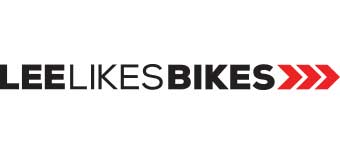Light-casing tires for DH?
Lee,
The last few seasons I have been running light casing tires (2.5) on my DH rig and have had very good luck with flats. I’m usually running 35 lbs and from rocks to races enjoy the faster spinning setup. My question is: Am I missing out on anything other than durability with a dual ply? I have heard you can run lower pressure on a full DH tire for more traction but I like to have a fast roll to stay on the podium. Thanks, MW
|
The more you click, the more I can post. Lee Likes Groceries dot com! |
Hey,
The main advantage of dual ply tires is durability. Sure, you can run less pressure than with thin casings, but the thick casing is stiffer and less compliant, which means less traction than the thin casing. And low pressure makes your bike handle vaguely.
Advantages of heavy casings:
– More durable.
– More shock absorption. Less bounce. They seem to slow everything down.
– Heavier, for greater stability.
Advantage of light casings:
– Lighter, for greater acceleration.
– Less shock absorption. More lively and responsive.
It’s really a question of terrain and riding style.
– I’ve always run light-casing tires on smooth courses like Sea Otter. This year I rode a pair of Specialized Resolutions at 40psi, and they were awesome. I tried to run the same tires at Crested Butte, which only has one short rock section, but — you know it — that’s where I tore the sidewall open. I give up! While I love the feel of light tires, I now ride dual plies on every DH course but Sea Otter.
– The faster you ride, the more air and durability you need. Yeti-FOX DH racers Jared Graves and Justin Leov run around 30 pounds in their dual ply Maxxis DH tires. As Brian Lopes has told me: Rely on the tread and compound for traction. Run lots of air for good rolling resistance and handling. That guy races 4X with single plies and around 50psi.
What to do:
If you like the way your bike rides, and you’re not flatting, I say stick with the single ply tires. I’m going to assume you’re light, and your trails are smooth, and you don’t ride very fast (yet).
If you’re really serious about your racing, do timed runs with both setups. Change one variable at a time — tire or pressure — and see what the clock says. That’s the only true measure.
Rip it,
— Lee

Comments are closed.